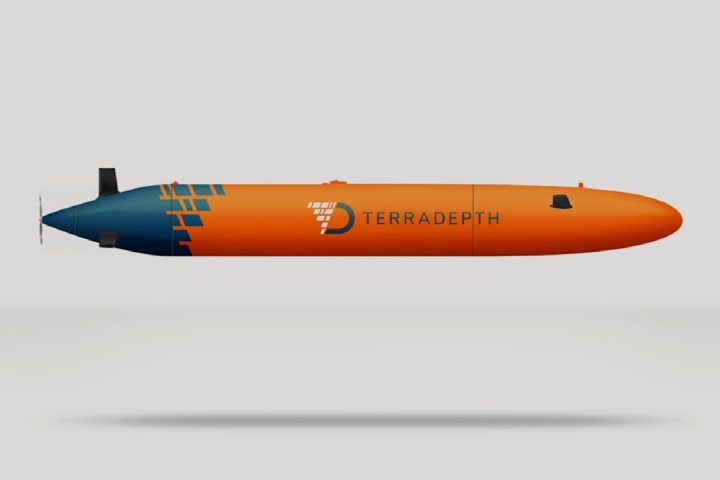
A tag team of deep-sea underwater robots sounds a whole lot like the setup for a Hollywood blockbuster. In fact, it’s the mission statement of a new startup with the appropriately cinematic name Terradepth. The company, founded by a pair of ex-Navy SEALs, is building autonomous submersible robots to help map parts of the ocean that are typically difficult to monitor. And it’s raised $8 million in funding to do so.
“Our highly intelligent unmanned ocean vehicle completely removes the need for humans at sea,” the company notes on its website. “The Terradepth AxV is deep-ocean rated, highly modular, and powers a large payload of sensors.”
The company’s mini-subs will reportedly boast an at-sea duration of 30 days, with an onboard recharging system capable of propelling them through the waves with a range of 1,000 nautical miles per deployment. The Terradepth AxV sub is 9.2 meters in length, and tips the scale at 3,700 kilos. (Although, of course, weight works a little bit differently underwater.) They will initially be able to reach depths of 1,000 meters, although plans are afoot to extend this to 3,000 meters, meaning that they’ll be able to journey to the bottom of many parts of the ocean. For context, the deepest point in the ocean, the Challenger Deep, is approximately 11,000 meters down.
“During at-sea operations, the topside AxV provides sea surface data collection, communications and navigation assistance, while the submerged AxV conducts its submerged mission,” the company notes. “The two AxVs can then switch roles once the submerged vehicle’s energy is expended to a predetermined level. Once surfaced, the vehicle employs a hybrid system of rechargeable lithium batteries and an air-dependent power plant capable of operating high-power, high-logistics instrument payloads.”
Underwater, the plan is for the robots to be able to able to gather data using multispectral imaging and other surveillance methods. This will be useful for both monitoring and forecasting services. Eventually, the goal is to be able to roll out entire networked fleets of autonomous robots. At present, Terradepth is planning on demonstrating its tech in an open-water environment in summer 2020.
Just when you thought it was safe to go back in the water, too.


